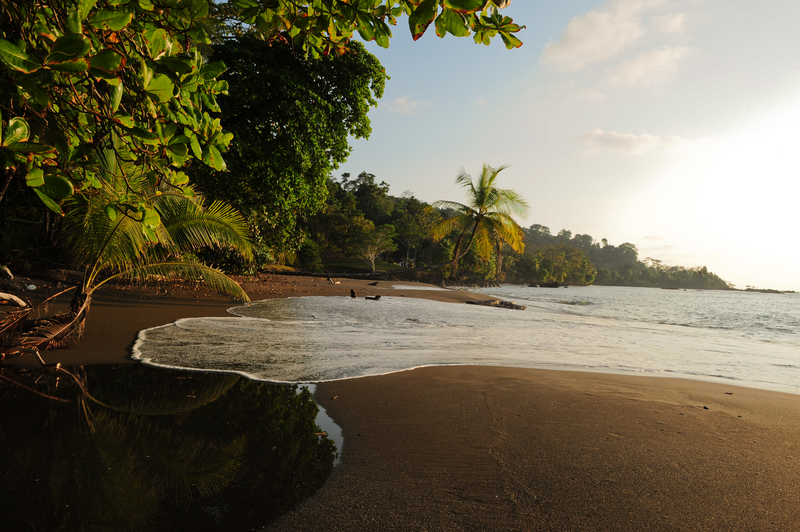 When you visit, you will be able to see a wide variety of wildlife, including all four Costa Rican monkey species. Other animals include anteaters, Baird’s Tapir, bull sharks, jaguars, ocelots, puma, scarlet macaw, sloths, toucans, and black vultures. Some of the many snake species include the boa constrictor which is the largest snake found there, eyelash pit viper, bushmaster, and coral snake.The best time to visit is during the dry season which runs from the middle of December to the middle of April. Drake Bay is north of the park and from there you can get into the park.
When you visit, you will be able to see a wide variety of wildlife, including all four Costa Rican monkey species. Other animals include anteaters, Baird’s Tapir, bull sharks, jaguars, ocelots, puma, scarlet macaw, sloths, toucans, and black vultures. Some of the many snake species include the boa constrictor which is the largest snake found there, eyelash pit viper, bushmaster, and coral snake.The best time to visit is during the dry season which runs from the middle of December to the middle of April. Drake Bay is north of the park and from there you can get into the park.
The nearest town is Puerto Jimenez and there you can hop on a bus to take you on the three to five hour trip to the south entrance of the park at Carate. You can also rent a 4WD vehicle if you prefer to drive yourself. There is plane service from Golfito to the ranger’s station in the park. Once at Carate, it is a 4 km walk to the park entrance.
To enter the park, you need a pass and it can be purchased online up to a month before your visit. Permits are needed to camp and if you want to eat or stay at the Sirena Ranger Station, you need reservations.
Inside the park there are no places to buy souvenirs and the only place to eat is at the Sirena ranger station. You are allowed to bring in your own food which needs to be non-perishable and lightweight. It is also recommended you bring water to drink even though there is potable water available at the ranger stations. You will also need sunscreen and insect repellant.





